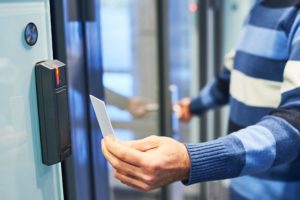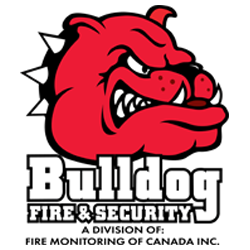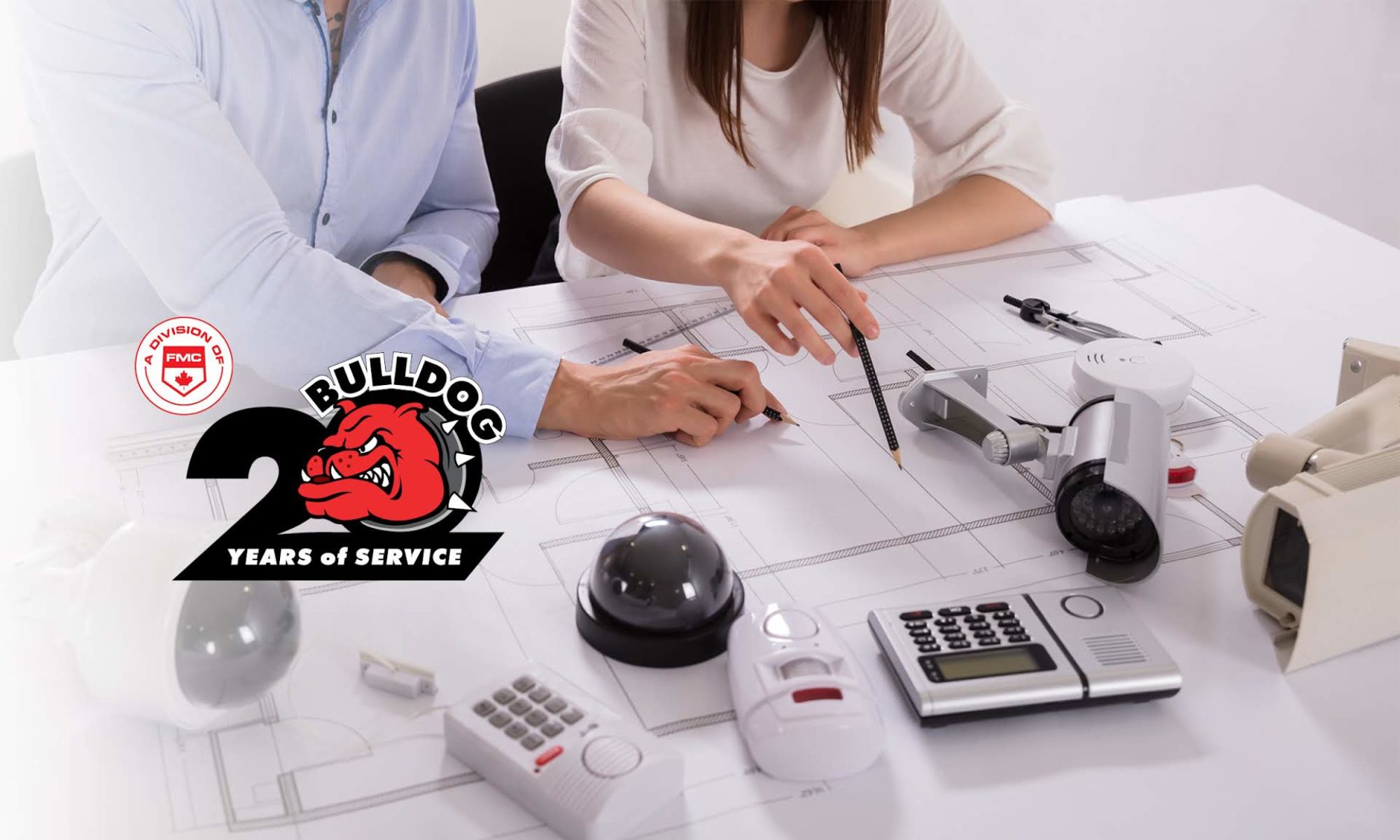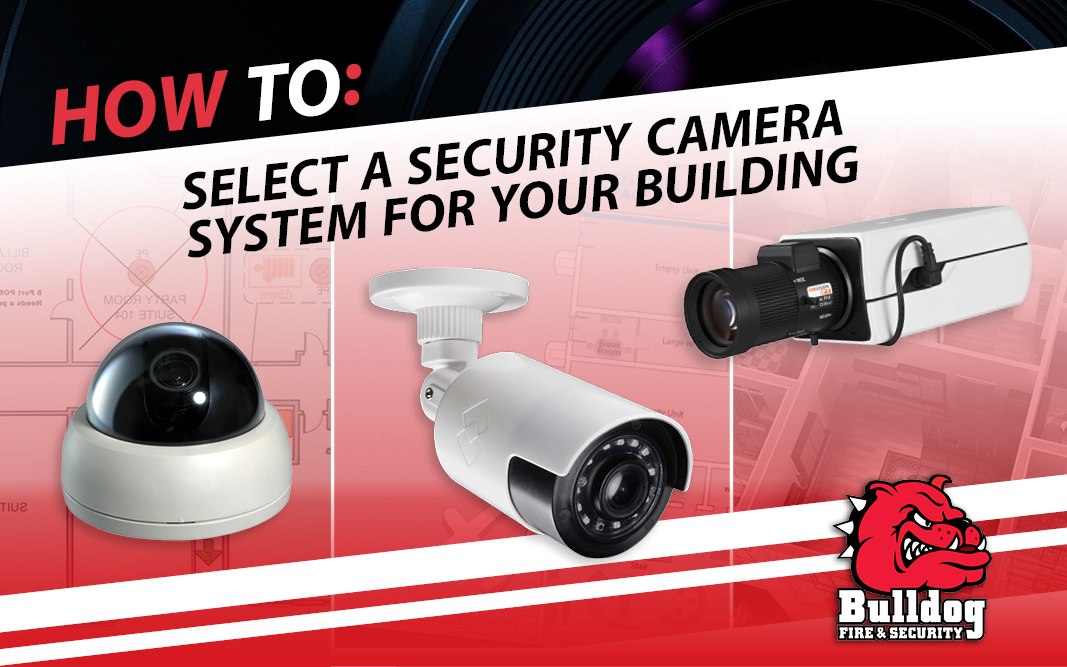A Security Camera System is an important component of your building’s overall security, and there are many questions you need to answer when choosing the right system for your needs. However, this can be an intimidating process for a buyer to go through due to the fact that there are so many similar camera styles available from countless manufacturers. To help you on your way, here are five considerations to help you choose a Security Camera System for your building.
1. What Do You Need to Use the Cameras For?
Security cameras have a wide range of styles, features, and capabilities that can satisfy a large variety of facility needs. Some common camera uses include:
- Capturing events in order to protect your building and ensure employee and public safety.
- Monitoring day-to-day operations.
- Deterring theft, fraud, and vandalism.
- Surveillance of public events.
- Outdoor perimeter security.
A properly installed Security Camera System that utilizes the right camera styles and associated features will give you the ability to provide coverage of many different areas within your building and/or on your property. The different building areas have unique challenges and you should consult a security professional when choosing the appropriate security camera to ensure that it/they are going to meet your requirements.
A security professional will work with you to review many important questions including:
- Are indoor or outdoor cameras needed?
- Will there be changes in lighting conditions?
- Is night vision required?
- At what height does the camera need to be mounted?
- What is the distance to the target?
- What is the scenario you are trying to capture?
- Do you require visual identification or situational awareness?
2. Do You Need Your Cameras to be Intelligent?

The use of video analytics helps to alleviate the time-consuming process of monitoring your video footage 24/7. Camera or video software analytics facilitate this by alerting specified users to pre-determined event triggering activities. These pre-determined events will cause an analytic alert to be triggered and can either result in a push notification to desired recipients or create a timestamped analytic event in the history of the recording software, which will allow for improved search functions in recorded footage. This additional freedom will allow you to concentrate on other activities, while providing you with the peace of mind of knowing you will be notified of important events in real-time, and allow you to spend less time sifting through video to find desired events.
Video analytics can perform the following:
- Search video footage through specific parameters.
- Provide push notifications of alarms.
- Video verification.
- Distinguish people from animals or vehicles.
- Identify unusual events from routine activity.
The application of video analytics will make your Security Camera System perform more intelligently, which will make the system more efficient, and reduce the workload involved in managing the video system.
3. Do You Want to Set up a Local NVR Recorder or Record to the Cloud?
Local video storage is done through a Network Video Recorder (NVR). These devices can manage multiple cameras simultaneously, and can be set up to record continuously, only when activated by an event, or a combination of the two. It’s important to note that recording video, especially from multiple cameras, requires significant storage capacity. A trained security professional will work with you to assess your storage needs, and develop a process for how your system will handle footage once the NVR reaches its capacity.
If you aren’t interested in managing local recording, you may prefer cloud storage. In this scenario, video footage is stored on the cloud in the same manner that today’s mobile phones store photos and other data. With cloud storage, your footage (event based or continuous) is sent off to remote servers where it is kept for a monthly or annual fee.
4. Do You Require Integration with Access Control and Your Security System?

You can get more out of your Security Camera System when it is integrated with Access Control and other devices within your security system. Through integration, you can achieve increased efficiency through a centralized security system that has all major components working together. An integrated system can ensure that you receive notifications on critical events, while also collecting information that you can use to improve overall building security and efficiency.
5. Budget
Your Security Camera System’s capabilities will largely be determined by your budget. It is possible to build a system for almost any budget. However, depending on the financial resources you have available, you may need to start to eliminate some features. Because of this, it’s incredibly important for you to determine what features and tools must be a part of your system. Additionally, you will want to ensure that your system is future proof, allowing you to scale up the system as your business or facility grows. We recommend shopping for quality over quantity whenever possible, with the view to expansion as resources present themselves.
Contact Us Today for a No Obligation Assessment

For 19 years, Bulldog Fire and Security has been an expert in Security Camera System installation, having installed a variety of systems across Southwestern, Ontario.
To schedule a no obligation assessment of your facility’s Security Camera System needs, call us at 1 866 670 1590, email info@bulldogsecurity.ca, or fill out the contact form below.
Learn More
If you’re looking for more information on Security Camera Systems, or are curious about the different types of cameras that exist, CLICK HERE to learn more.


One Reply to “How To Select a Security Camera System For Your Building”